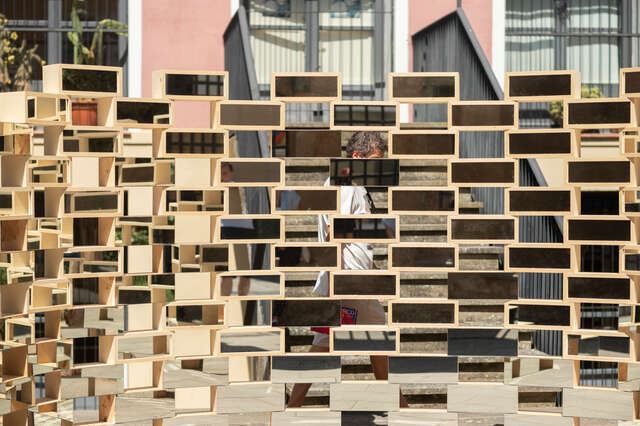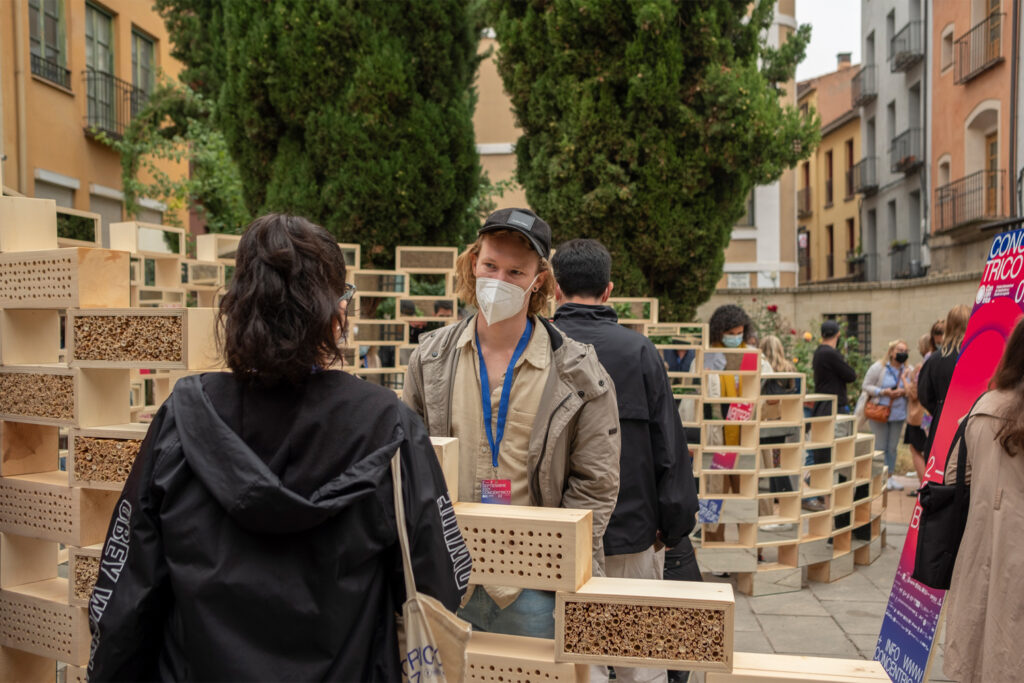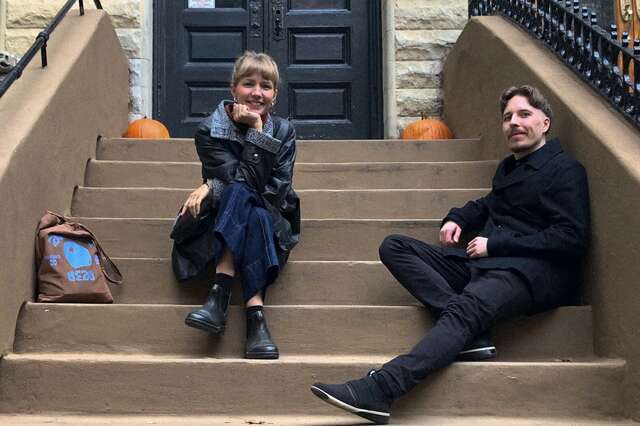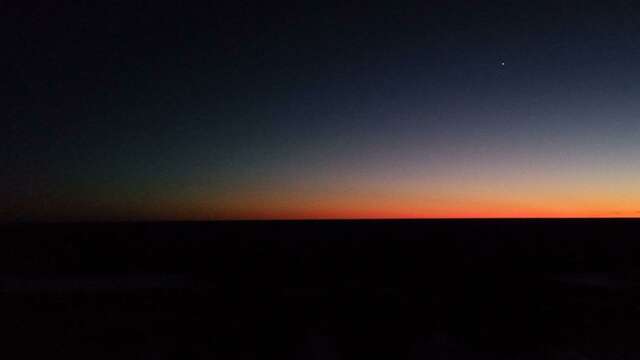A city for people and insects – VAPAA Collective’s installation delighted in Spain

The Finnish architects’ installation at the Concéntrico festival in September, was enthusiastically received by both the public and international media. The founders of VAPAA Collective, Iines Karkulahti, Charlotte Nyholm and Meri Wiikinkoski, talk about their work, which focuses on the relationship between architecture and the climate and biodiversity crisis.
Our installation, 39186 Vacant Rooms, represented the Finnish Institute in Madrid at the Concéntrico International Architecture and Design Festival in Logroño, Spain. The festival, which has provided perspectives on the city and the urban environment since 2015, is recognised as a sharp-eyed, future-oriented architectural event that has sparked discussion in the international field of architecture, in addition to increasing dialogue between the city, cultural heritage and contemporary architecture.
The VAPAA Collective was founded by three young architects to reflect on the relationship of architecture and architects to the dual crisis of climate and biodiversity caused by climate change. In our operations, we approach broad and complex problems from various perspectives and communicate them through speech, writing and design. In the Vacant Rooms installation, we chose to focus on the coexistence between humans and other organisms.
A number of Concéntrico’s pavilions this year commented on the changes in architects’ work caused by the climate crisis. Many of the international architecture and design publications writing about the festival emphasised ecological sustainability, and our installation was mentioned as one of the festival’s highlights. News coverage on the topic indicates that discussions on an ecologically sustainable future are becoming mainstream in the field of architecture.
39186 Vacant Rooms was based on the massive wave of extinction affecting the Earth. Since 1970, global populations of vertebrates have declined by 68%. For smaller creatures and plants, the figure is likely to be even higher, and one of the main reasons for this is the change in land use over the last 50 years.
Urbanisation has been rapid, and the extraction of raw materials has been accelerating. Contemporary Western societies draw a clear line between the built and the natural environment; our cities are not built with the needs of non-human species in mind. While we might enjoy spending time in nature, most of us no longer live amongst it.
When other animals or organisms try to inhabit our spaces, we are quick to clear them out – even from underused attics or barns. If we want to stop the irreversible loss of biodiversity, we must find ways of accommodating nature in our cities. The clientele of architects has changed: we need to start designing not only for humans but also for other living beings.
The perceptive work continues to live in hundreds of gardens
One of the central ideas of Concéntrico is to highlight the relevance and characteristics of existing urban spaces by creating connections between streets, yards and hidden spaces, places that may go unnoticed in everyday life. Values such as these are also strongly present in the design philosophy of our collective. An innovative and diverse use of existing spaces makes more sense not only in terms of the climate, but also of culture.
39186 Vacant Rooms blurs the boundary between humans and nature. It creates a sanctuary in the city-centre not only for people, but also for insects navigating the stone city. The other side of the installation reflects the surrounding urban space made and used by humans, to which the work is inevitably linked. This reflective surface accurately mirrors the environment, not forgetting the most important part of the city: people. From a distance, an unobservant visitor may miss the entire work, which is always partially invisible blending into its surroundings. When people approach the installation, their movement brings the otherwise quiet surface to life.
The other side of the installation doubles as an insect hotel offering tens of thousands of cavities for pollinating insects to dwell in. The permeable structure weaves together the two sides, the city and nature, and forces us to ask how our society, our aesthetics and our attitudes need to change in order for us to welcome other creatures and organisms back into our urban environments.

The purpose of the installation is to stimulate discussion about the relationship between architecture and the climate crisis, while encouraging local people to take action to achieve change. We wanted to give people something to think about as well as the opportunity to act. However, it was very clear to us from the outset that the construction and disassembly of the work should not produce waste.
These two aspects led us to examine modular structures. We wanted the work to be easily divided into smaller parts, so that after the festival, the huge insect hotel could continue its life in smaller entities on people’s balconies and gardens. When the festival ended, all the modules found new owners in less than an hour. Now, instead of the festival courtyard in Logroño, the installation will inspire conversation in 270 different gardens.
The seventh Concéntrico festival was held in Logroño, La Rioja, from 2 to 5 September 2021 (link to the festival website, opens in a new tab). Articles about the festival and the VAPAA Collective were published in several international publications, such as ArchDaily (link) and Domus (link) and on the Condé Nast Traveller website (link). The installation was commissioned by the Finnish Institute in Madrid.

